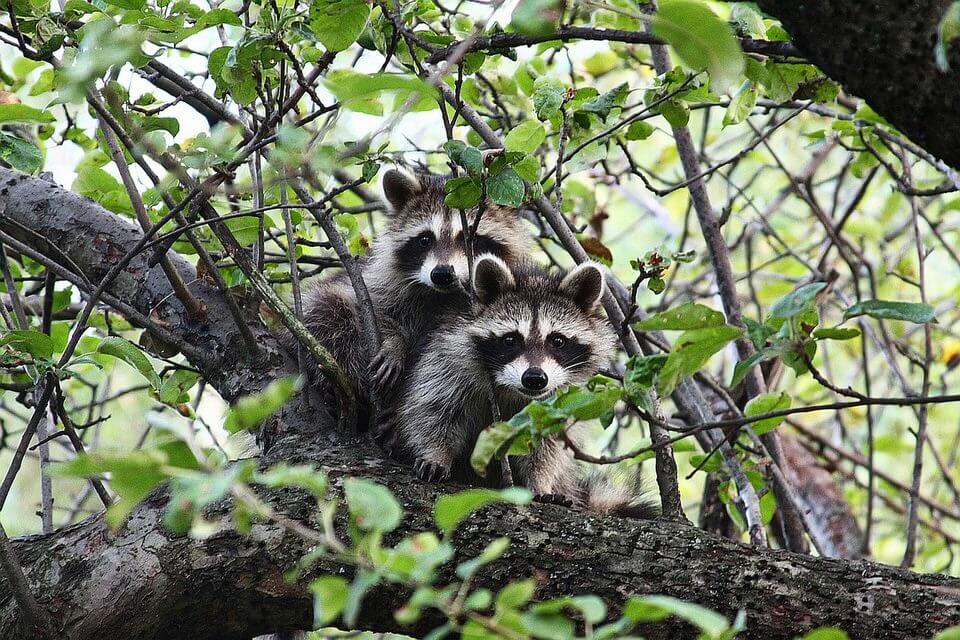Raccoons den in tree hollows and under rocks in the forest. In the city, they turn to attics and decks as alternatives. Raccoons are resourceful animals, and while they may look cute, they make terrible roommates. Raccoons are highly destructive animals that risk costing you thousands in repairs.
The raccoons that break into homes are usually females looking for a safe place to have their young. Attics are warm, above ground, and relatively safe from predators. To get inside, females will push their way through soffits or break through the vents on top of the roof. These are smart animals that are strong enough to break their way through. Once inside, they make a mess of the insulation, ruining it with feces and tearing it apart.
If you suspect that there are raccoons in your attic, look for the following signs and call Animal Control Oshawa or another wildlife removal company near you.
-
Noises in the Attic
What is perhaps the most telling sign that there are raccoons in the attic is hearing noises at night. Thumping, scratching, chittering, and what sounds like a person walking in the attic are typical raccoon noises. The noises they make are echoed throughout the attic, making them sound much larger than they really are.
-
Feces on the Roof
Raccoons produce a lot of feces. Unlike other animals that leave feces everywhere they go, raccoons tend to visit the same locations every time. This creates piles of feces known as latrines. Raccoon feces are between 2 and 3 inches long and an inch thick, much like a dog’s. Latrines smell terrible and are often found near the animals’ dens, either within the attic or somewhere on the roof. Do not go near these latrines and contact a professional for cleanup.
-
Spotting Raccoons
If you’ve been seeing raccoons on your roof or anywhere on your property, they may have a den inside the house. A raccoon’s territory only ranges between one and two-thirds of a square kilometer. In other words, they don’t go very far. Raccoons like to settle in areas where they feel comfortable and there is food nearby.
-
Stains on the Ceiling
Raccoons that have been in the attic for some time will leave stains on the ceiling. With time, the urine that the raccoons have left in the attic will seep down into the ceiling below, creating circular, moist stains on the ceiling. A raccoon that has torn a hole in the roof will also bring rain and snow into the attic, which may also cause moisture stains in the ceiling.
-
Damage to the Property
Damaged soffits, shingles, and roof vents may indicate that raccoons are living in the attic. If you can go in the attic, look for damaged insulation and feces. Raccoons are messy creatures that will tear their way through the roof, leaving lasting damage. They may also chew on electrical wires inside the attic and cause power outages.
-
Foul Odours
Raccoons are wild animals that urinate and defecate near their dens. When they live in the house, they cause terrible odors. If you smell something coming from upstairs, or if you can get into the attic and you smell something awful, it could be raccoons.
-
Electrical Issues
Baby raccoons that are teething will chew on everything, including wires. This may cause power outages, flickering lights, and outlets that stop working. Raccoons denning in the attic will also shift the insulation around and damage it with their feces, causing issues with the heating and air conditioning. Damaged insulation cannot work properly, so you may begin to have problems with your thermostat and your energy bill.
-
Spilt Garbage
Finding your garbage cans pushed over with their contents strewn about is likely due to raccoons. Raccoons are little thieves that like to find food in the garbage. They have nimble fingers that let them turn handles and get into things they shouldn’t.
Call a Wildlife Removal Company
If you’ve noticed any of the signs above, contact a local wildlife removal company. A technician will come to inspect your property and find where the raccoons are coming from. Then, he or she will install a one-way door to the entrance of the den, which will let the animals out safely on their own. Once out, they cannot get back inside. If there are babies in the den, the technician will remove them by hand and ensure that they are safely reunited with their mother.
Wildlife removal companies also provide exclusion services in which they will repair holes in your roof and block potential entry points, so you don’t need to worry about this again.
Follow Home Inside for more!
